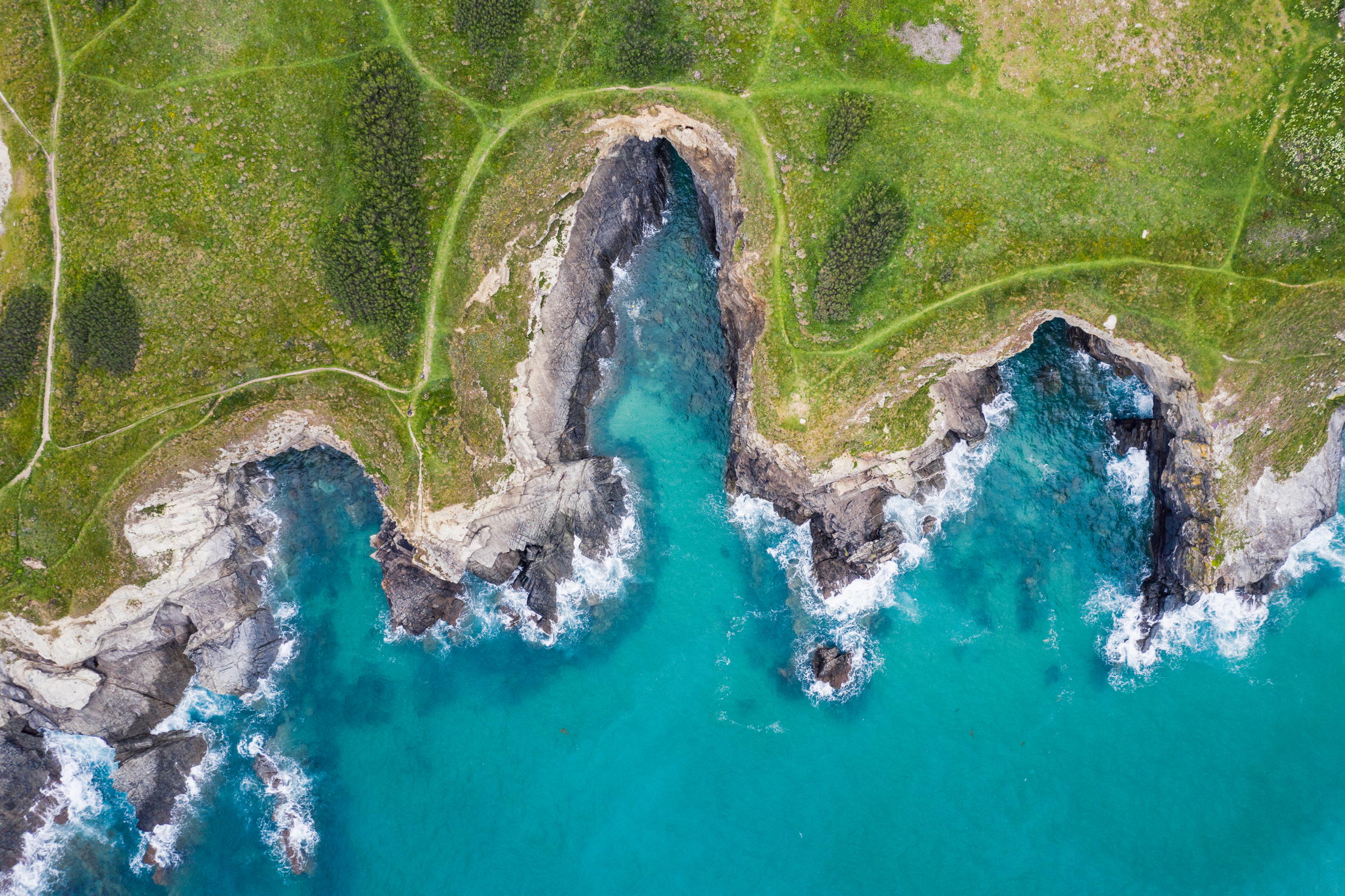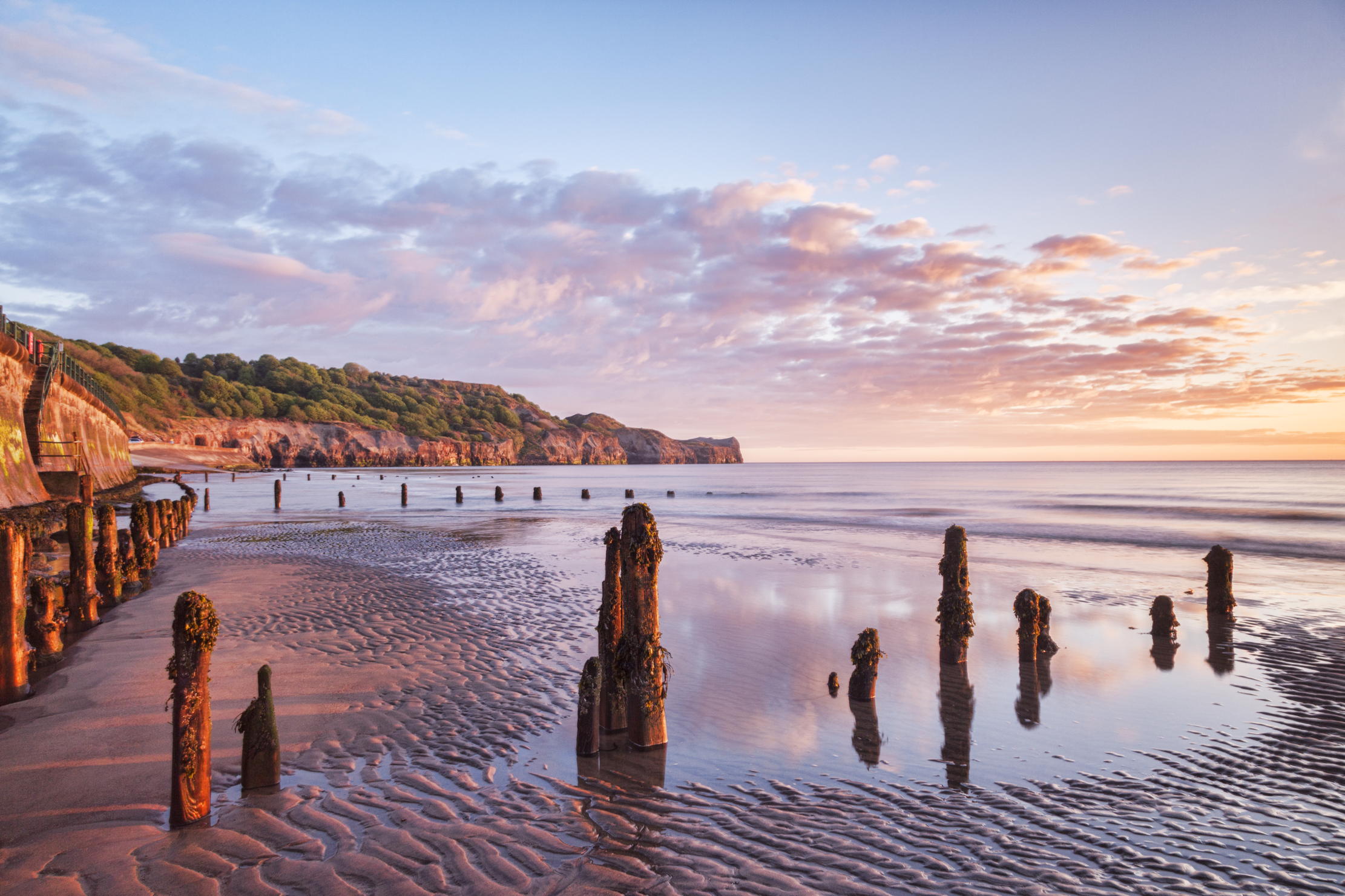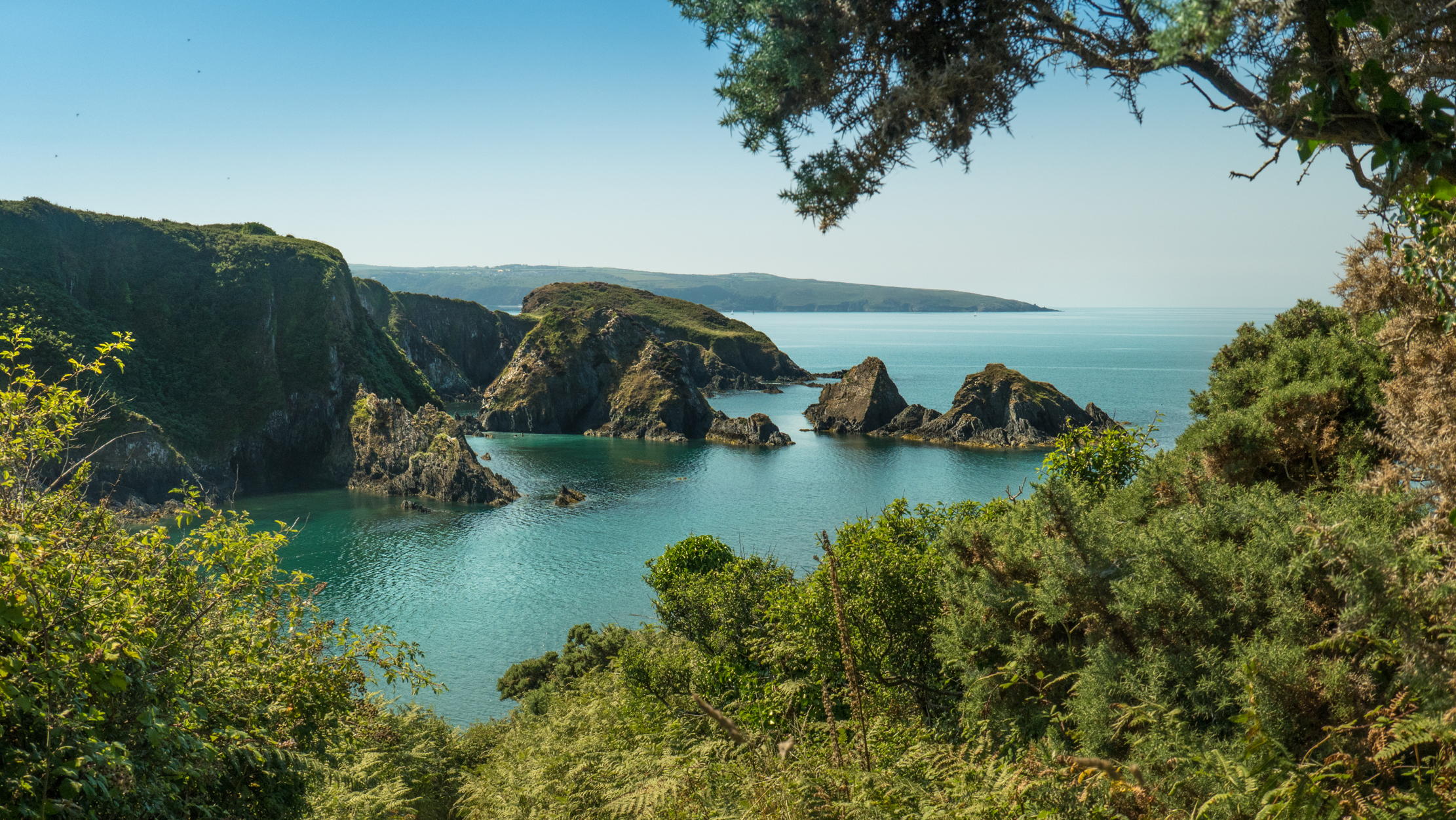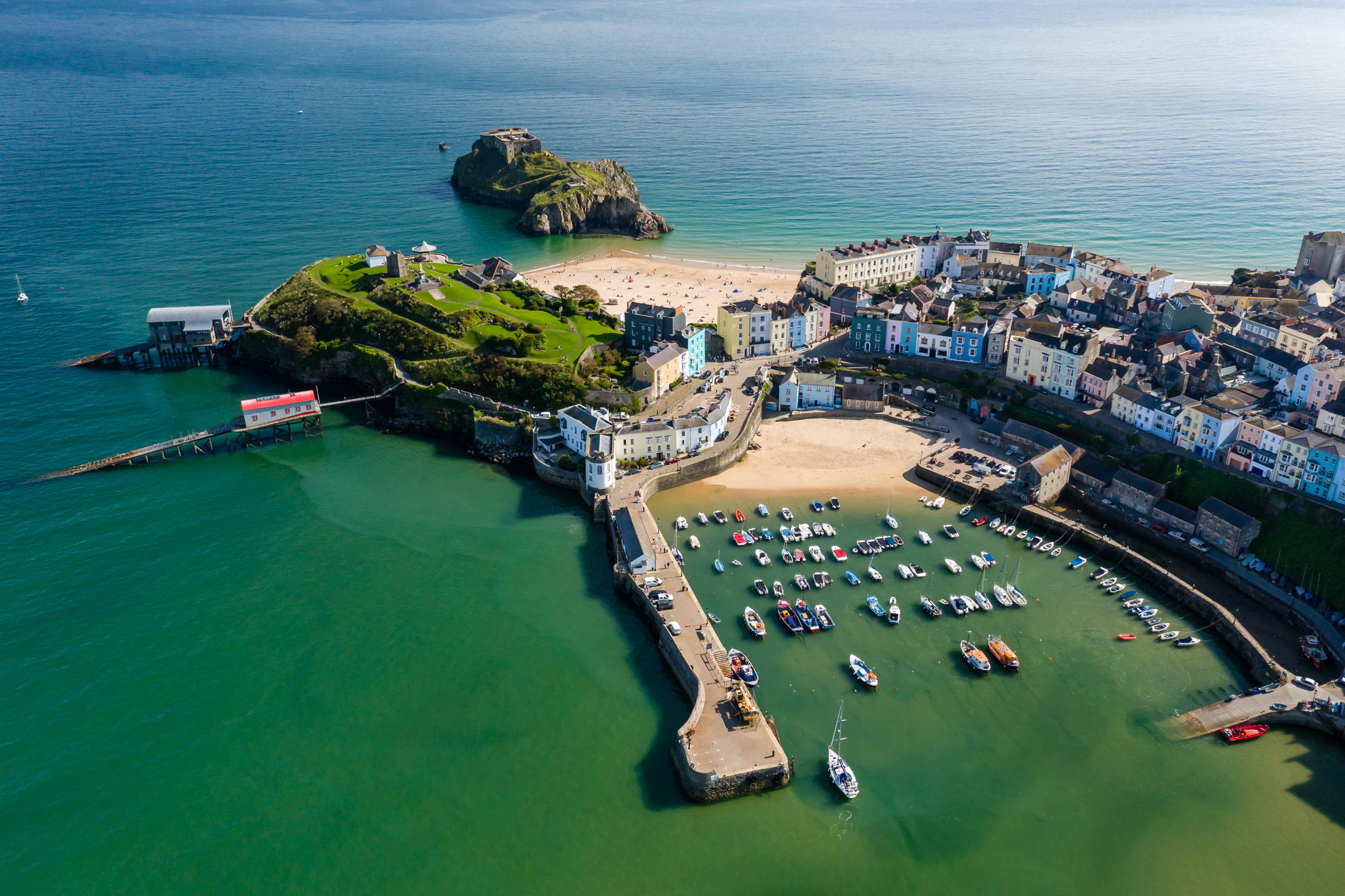19,000 miles of exquisite beauty: Britain's incomparable coastline
Our beautiful, infinitely varied coast has become central to our national concept of what makes Britain so special, says Peter Waine.


We are never more than 72 miles from the sea. Britain, including the islands, has a coastline of more than 19,000 miles, a mere 5,000 miles shorter than the circumference of the earth and blessed with all the diversity for which the land has been lauded for centuries. Yet, until the late 18th century — and, really, not until the 20th century — the coast was a distant poor relation, perceived as merely the abode of fishing folk, military fortifications, lawless pirates and smugglers. This was despite Britannia long and proudly parodying itself as an island race and ruling the waves.
William Cobbett in his Rural Rides (1821–26) generally gave the coast a wide berth and H. V. Morton, a century later in his In Search of England, charted a decidedly inland course. The Spectator, when reviewing the Batsford guide to the English coast as late as 1936, could still write with justification that guide books generally overlooked ‘the exciting and beautiful relationship of the land to the sea’. Unlike the countryside, which is largely the result of centuries of human endeavour, the coast is the last repository of wilderness, the evocative recall of the absent traveller or the welcome sight on their return — but none of that made an iota of difference.
In the early 19th century, the building of the turnpikes saw enlightened entrepreneurs, not least William and George Cooke, embrace the commercial benefits of the coastline. They commissioned J. M. W. Turner to paint scenes of the south-west coast and then made engravings for publicity. Constable soon followed, adding marine scenes to his repertoire, and the Norfolk School celebrated the Norfolk coast in oils. Within two years of Turner’s engravings hitting the market, William Daniell recorded the entire coastal landscape in eight volumes to illustrate the ‘grandeur of its natural scenery’. Soon, the coast was no longer the preserve of smugglers nor even of the wealthy seeking the restorative recreation of sea-bathing.

The railways and, later, the car contributed to easier access, but also to the destructive threats posed by holiday bungalows and by ‘villadom’. The first parcel of land donated to the National Trust in order to resist this urban advance on the coastline was above Cardigan Bay in Wales, given in 1895 by Fanny Talbot, so it would never be ‘vulgarised’ by the ‘abomination of asphalt paths and cast-iron seats’.
Campaigning followed the conclusion of the First World War, with the Campaign to Protect Rural England (CPRE) proposing that Cornwall should become a sea park — mapping out a footpath around its coastline in order to arrest the march of the bungalows — so that all could enjoy the unimpaired view as ‘the shore lies open to the majestic swell of the Atlantic’ and of the springtime cliffs ‘carpeted with wildflowers whose massed brilliance of colour rivals the flowery pastures of the Alps’. The Pembrokeshire Coast, together with other areas — such is our rich and eclectic coastal diversity — could have been quoted with equal conviction.
In 1936, author and campaigner Wesley Dougill proposed ‘the reservation all round the coast of a belt of open space free from building’. Come 1937, the Commons, Open Spaces and Footpaths Preservation Society lamented that building was proceeding unchecked: ‘open spaces are being enclosed, cliff paths obstructed, bathing coves barred to the public, and scenery spoilt’. At the outbreak of war in 1939, the campaign for coastal protection was clearly a work in progress and not much progress had, in fact, been made. Incongruously, although the Second World War might have delayed debate, it gave the cause a great boost, igniting the desire to further protect our coastline with its recent poignant imagery of fighting on the beaches in a nation’s darkest hour.

The recruitment drive was given a patriotic push by travel-poster artist Frank Newbould (1887–1951), with a poster in the series ‘YOUR Britain — Fight For It Now’ showing a lone shepherd and his dog on the South Downs with a crucial glimpse of the distant sea. When I chose it for the ‘My Favourite Painting’ page (May 28, 2014), the then Country Life art critic John McEwen suggested it ‘reflected Churchill’s view of the war: Britain as the immemorial defender of tranquil liberty opposed to German industrialism run amok’.
Sign up for the Country Life Newsletter
Exquisite houses, the beauty of Nature, and how to get the most from your life, straight to your inbox.
Surprisingly, when the list of proposed national parks was drawn up in 1947, no sea parks were included — apparently, it was too complicated. Later, coastlines were incorporated into new national parks, such as Exmoor, and a special designation to protect coastal gems was offered via Areas of Outstanding Natural Beauty. Even then, however, there was still nothing proposed for the majority of the coastline, those areas ‘ordinary’, but intrinsically beautiful.
In 1961, the CPRE campaigned to get the Government to request that local authorities survey their remaining unspoilt coastlines, paving the way for the National Trust’s successful Enterprise Neptune, aiming at saving 900 miles of the best coastal areas remaining; nearly 800 have so far been rescued.

The National Trust and the CPRE produced a joint manifesto in 2011, to highlight the threat to the coast posed by global warming and rising sea levels. First-class agricultural land in the Lincolnshire and Cambridgeshire Fens needed to be saved for food production, but also, in the case of the former, because of its internationally unique landscapes (together with the Somerset Levels and Romney Marsh).
The campaign to save the coast is ongoing, but increasingly successful; the countryside and the coast are now viewed in the same light, two equal and complementary jewels, the latter no longer a mere afterthought. How fitting for an island people.
Peter Waine is the former chairman of the CPRE and co-author of ‘22 Ideas That Saved The English Countryside’ (Frances Lincoln)
Peter Waine is the former chairman of the CPRE and co-author of ‘22 Ideas That Saved The English Countryside’ (Frances Lincoln).
-
 Some of the finest landscapes in the North of England with a 12-bedroom home attached
Some of the finest landscapes in the North of England with a 12-bedroom home attachedUpper House in Derbyshire shows why the Kinder landscape was worth fighting for.
By James Fisher
-
 The Great Gatsby, pugs and the Mitford sisters: Country Life Quiz of the Day, April 16, 2025
The Great Gatsby, pugs and the Mitford sisters: Country Life Quiz of the Day, April 16, 2025Wednesday's quiz tests your knowledge on literature, National Parks and weird body parts.
By Rosie Paterson